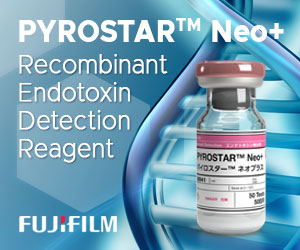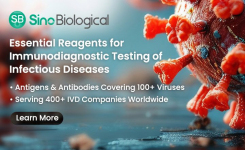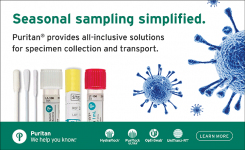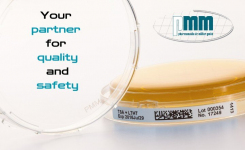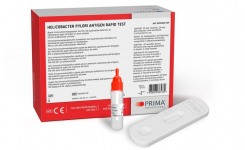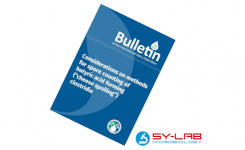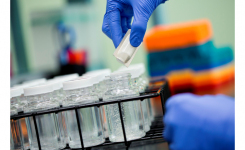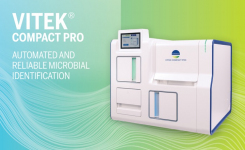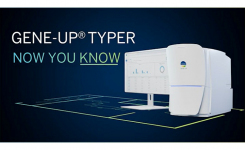
*rapidmicrobiology.com does not supply any products we help connect buyers with appropriate manufacturers, the information on this page is intended for healthcare professional use only,
Introduction: SARS-CoV-2 (novel coronavirus) was first reported on 31st Dec 2019 in the city of Wuhan, China. Initial cases were linked to a seafood market in Wuhan, and within two weeks, China and international airports began screening passengers coming from the area with infrared thermometer devices.
Although efforts were made to contain its spread, incidences of infection were reported in neighbouring countries, i.e. Korea and Japan. In one notable case, where government health officials were criticized for mishandling the containment of the virus, and where the virus was allowed to be spread between people, was on the Diamond Princess cruise ship.
In this incident, passengers were told they could not leave the cruiser after it was found that one person who departed a week previously, had shown positive for the virus. The ship was then used to 'quarantine' the remaining passengers until they were all tested. However, this had an undesired effect, as more people on the ship showed positive for the virus, it was clear that this impromptu quarantine holding was acting more like an incubator for the virus and allowed its transmission between people on board.
By the 30th of January, WHO had declared SARS-2-CoV, the virus that causes the disease Covid-19, a public health emergency of international concern.
The virus has been designated SARS-CoV-2 by the Coronavirus Study Group (CSG) of the International Committee on Taxonomy of Viruses. The CSG formally recognizes this virus as a sister to severe acute respiratory syndrome coronaviruses (SARS-CoVs) of the species Severe acute respiratory syndrome-related coronavirus and designates it as Severe Acute Respiratory Syndrome Coronavirus 2 (SARS-CoV-2). Infection by the virus can cause respiratory symptoms, fever, and fatigue. But in severe cases, especially people with compromised immune systems, the virus can cause severe acute respiratory syndrome (SARS), organ failure and even death.
Coronaviruses are large viruses, ranging from 65nm- 125nm in diameter, they are enveloped viruses with a positive-sense, single-stranded RNA genome belonging to the Coronaviridae family. The virus belongs to the 2B group of the betacoronavirus family, which is the same family as SARS-CoV and MERS-CoV and has 70% similarity in genetic sequence to SARS. These viruses are given the name corona (Latin for crown) because they possess a crown-like coat, much like the sun's corona ( club-shaped glycoprotein spikes protruding from it's surface). These spikes allow the viruses to bind to certain receptors on our cells.
The structure of SARS-CoV-2; consists of a spike protein; which includes two regions, S1 and S2, where S1 is for host cell receptor binding and S2 is for membrane fusion. The spike protein is a typical target for neutralizing with antibodies and vaccines. It been reported that SARS-CoV-2 can infect the human respiratory epithelial cells 100-1000 times more than previous coronavirus strains and does so by interacting with human ACE2 receptors.
The Nucleocapsid Protein is the most abundant protein in SARS-CoV-2. The N-protein is a highly immunogenic phosphoprotein and rarely changes. The N protein of SARS-CoV-2 is often used as a marker in diagnostic assays.
There is also the hemagglutinin-esterase dimer, a membrane glycoprotein, an envelope protein, and RNA.
Antibody tests: These tests are performed on blood samples from infected persons and became a useful tool in elucidating the links between several cases. These links would not have been made if viral particles were looked for via PCR methods. This is due to the fact that the patient's immune defence might be successful in eliminating the virus and hence removing any trace of where it came from. However, when specific antibodies are searched for in the same patient, they will be able to be detected because they stay within the blood for several years. Commercial immunoassay tests to detect COVID-19 include a dual ELISA test to be performed. This detects specific IgA and IgG against the virus in the blood of infected patients. There is also an automated fluorescent immunoassay system to measure quantitatively or semi-quantitatively the concentration of the targeted analyte, which can be the viral antigen or IgM/IgG
(HTA) due to the window between infection and antibody detection they are not recommended for use as a primary diagnostic tool to diagnose acute infection. However, antibody status may be used to aid the clinical diagnosis of suspected non-critical cases that present a minimum of seven days after the onset of symptoms, or to diagnose COVID-19 in those with a negative rRT-PCR result; sensitivity is highest 15 days or more after the onset of symptoms
*Antibody (IgG/IgM/IgA & nAb) detection kits should not be used as sole basis for diagnosis due to possible false positives and false negatives - check with the manufacturer for claimed specificity and sensitivity.



